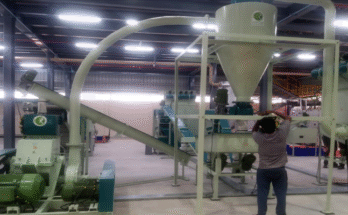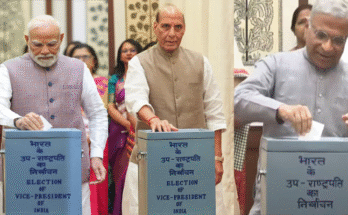Kathmandu: Nepal is in the grip of unprecedented political unrest as mass protests led by Generation Z have spiraled into violence, leaving a trail of destruction across the capital. Demonstrators, enraged by a social media ban and deep-rooted corruption, have set fire to key state institutions, demanding urgent reforms.
Supreme Court and Parliament Attacked
In a shocking turn of events, protesters set ablaze the Supreme Court and Parliament buildings in Kathmandu. The attacks symbolize growing public outrage toward Nepal’s judicial and legislative bodies, which protesters accuse of systemic corruption and failing the public trust. The destruction of these iconic institutions marks one of the darkest days in Nepal’s recent political history.
VIDEO | Nepal: Protesters set the Supreme Court in Kathmandu on fire amid anti-government protests.#Nepalprotest
(Full video available on PTI Videos – https://t.co/n147TvrpG7) pic.twitter.com/1ZlWODFC6C— Press Trust of India (@PTI_News) September 9, 2025
Prime Minister KP Sharma Oli’s Home Torched
Protesters also targeted former Prime Minister KP Sharma Oli, setting his private residence in Balkot, Bhaktapur, on fire. Despite security measures, demonstrators breached the premises early Tuesday morning and torched two buildings within Oli’s compound. This violent act came just a day after clashes between police and protesters left at least 19 dead and over 400 injured, intensifying the country’s political turmoil.
#WATCH | Nepal: Protesters dance and celebrate as the private residence of former PM K.P. Sharma Oli, in Bhaktapur, burns. The Nepali PM resigned this afternoon amid demonstrations against the Government over alleged corruption.
(Video Source: TV Today Nepal) pic.twitter.com/d71H1bQ1KJ
— ANI (@ANI) September 9, 2025
Oli Steps Down Amid Pressure
Facing mounting public anger and escalating violence, Prime Minister KP Sharma Oli resigned on Tuesday afternoon. His resignation followed two days of widespread protests initially triggered by a government-imposed ban on social media platforms. The youth-led movement demanded the removal of Oli’s administration and called for systemic reforms to tackle corruption and authoritarian governance.
Curfews and Airport Closure
In a bid to contain the unrest, the government imposed curfews in Kathmandu, Bhaktapur, and Lalitpur. Furthermore, all operations at Tribhuvan International Airport were suspended due to security threats, forcing the diversion of incoming international flights. These stringent measures reflect the gravity of the situation, as normal life across the capital ground to a halt.
Global Reactions and Broader Impact
The violent crackdown on protesters and the burning of state institutions have drawn sharp international criticism. Global organizations and human rights bodies condemned the use of force against peaceful demonstrators and called for constructive dialogue between the government and protest leaders. While the government lifted the social media ban following widespread outrage, it failed to quell the protests, signaling that deeper grievances remain unaddressed.
The Youth’s Demand for Change
The Gen Z movement has emerged as a powerful voice against systemic corruption, lack of transparency, and restrictions on free expression. The intensity of today’s protests underlines the frustration of young Nepalis who see themselves excluded from meaningful participation in their country’s democracy.
As Nepal stands at a crossroads, the unfolding crisis poses critical questions about its future governance and the resilience of its democratic institutions.




